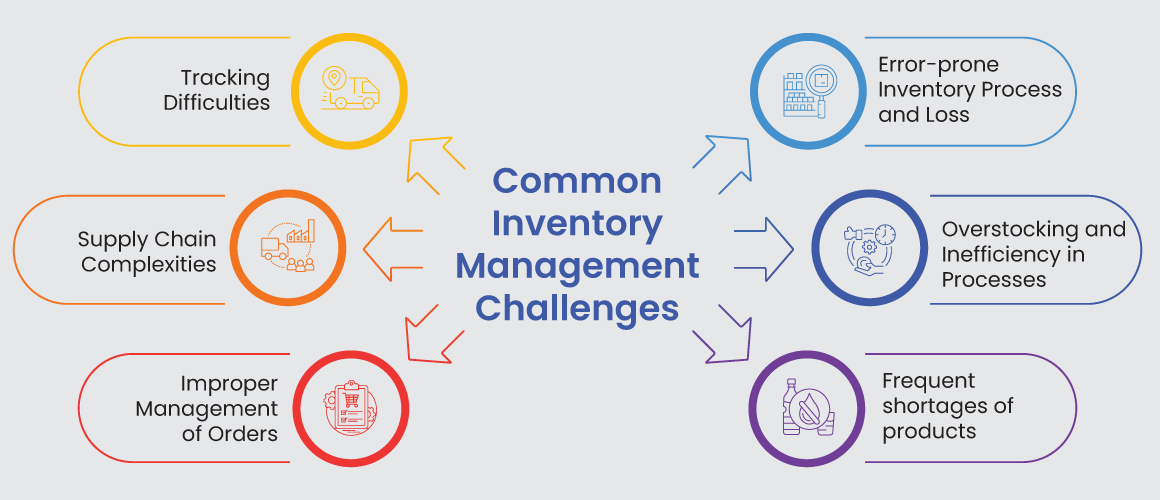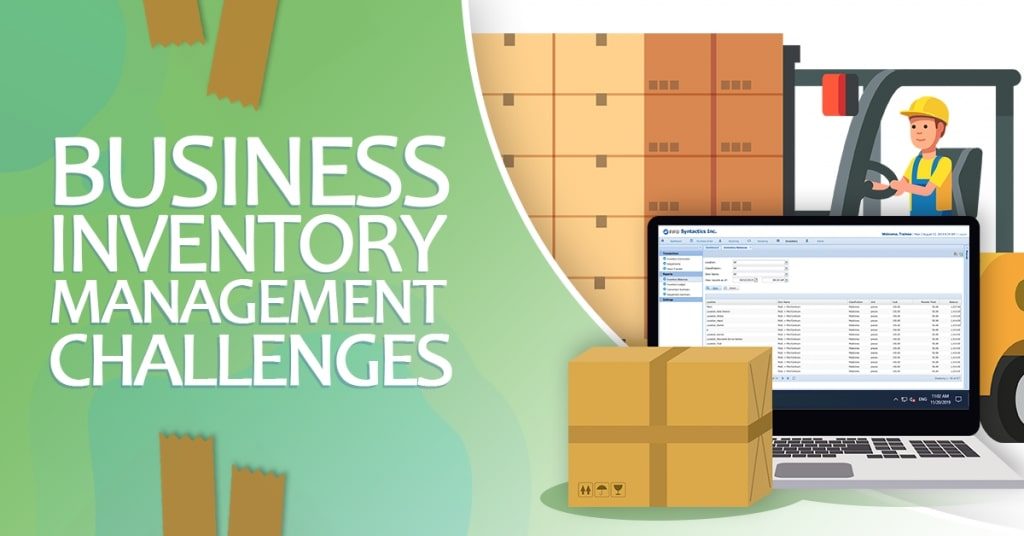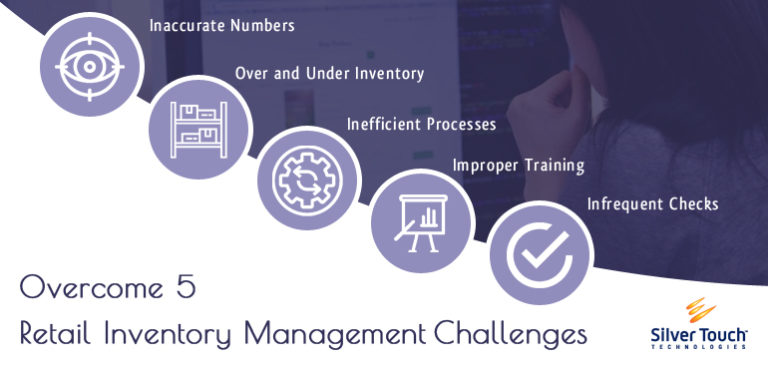Unveiling the intricacies of business inventory management challenges, this discourse delves into the multifaceted complexities that businesses encounter in optimizing their inventory practices. From grappling with inventory inaccuracy and visibility issues to navigating inefficient forecasting, slow inventory turnover, and the perils of excess inventory, this exploration provides a comprehensive analysis of the obstacles that businesses face in managing their inventory effectively.
Furthermore, the discussion examines the impact of seasonal demand fluctuations, the complexities of managing multiple warehouses, and the significance of inventory optimization. By shedding light on these challenges, businesses can gain invaluable insights into devising robust strategies that enhance inventory management practices, minimize risks, and maximize efficiency.
Inventory Inaccuracy
Inventory inaccuracy occurs when the recorded inventory levels do not match the actual physical inventory. This can be caused by a variety of factors, including:
- Human error during data entry or counting.
- Theft or loss of inventory.
- Damage to inventory.
- Changes in demand or product specifications.
- Poor inventory management practices.
Inaccurate inventory can have a significant impact on business operations. For example, it can lead to:
- Lost sales due to stockouts.
- Excess inventory costs due to overstocking.
- Inefficient inventory management processes.
- Poor customer service.
There are a number of best practices that businesses can follow to improve inventory accuracy. These include:
- Using a robust inventory management system.
- Regularly conducting physical inventory counts.
- Training employees on proper inventory management procedures.
- Implementing security measures to prevent theft and loss.
- Regularly reviewing inventory levels and making adjustments as needed.
By following these best practices, businesses can improve inventory accuracy and minimize the negative impact of inventory errors.
Lack of Visibility
Maintaining visibility across multiple inventory locations poses significant challenges. Without a comprehensive view, businesses struggle to track stock levels, identify discrepancies, and make informed decisions.Implementing inventory tracking systems empowers businesses with real-time visibility into their inventory. These systems provide accurate data on stock levels, locations, and movements.
By leveraging this information, businesses can:
Enhanced Inventory Management
- Optimize stock levels: Prevent overstocking and understocking by maintaining optimal inventory levels.
- Reduce waste: Identify and eliminate obsolete or slow-moving items, minimizing losses.
- Improve order fulfillment: Ensure timely and accurate order fulfillment by tracking inventory availability.
Inefficient Forecasting: Business Inventory Management Challenges
Inefficient forecasting in inventory management can lead to significant challenges, including stockouts and overstocking. This occurs when businesses fail to accurately predict future demand, resulting in either insufficient inventory to meet customer needs or excessive inventory that ties up valuable resources.
Factors Contributing to Inaccurate Forecasting
- Lack of Historical Data:Businesses with limited historical sales data struggle to make accurate forecasts, as they lack the necessary insights into past demand patterns.
- Unreliable Data:Inaccurate or incomplete data can skew forecasts, leading to misleading predictions about future demand.
- Unpredictable Demand:Certain products or industries experience highly variable demand, making it challenging to forecast accurately.
- External Factors:Economic conditions, industry trends, and weather patterns can significantly impact demand, making it difficult to predict with certainty.
- Human Error:Manual forecasting processes are prone to human error, which can introduce inaccuracies into the forecast.
Consequences of Poor Forecasting
Stockouts
- Lost sales and revenue
- Customer dissatisfaction and potential loss of loyalty
- Increased shipping costs due to expedited orders
Overstocking
- Excess inventory carrying costs (storage, insurance, etc.)
- Risk of obsolescence or spoilage
- Reduced cash flow due to tied-up capital
Best Practices for Improving Forecasting Accuracy
- Collect and Analyze Historical Data:Gather comprehensive sales data to identify trends and patterns.
- Use Statistical Forecasting Techniques:Leverage statistical models, such as exponential smoothing or regression analysis, to forecast future demand based on historical data.
- Consider External Factors:Monitor economic conditions, industry trends, and weather patterns to adjust forecasts accordingly.
- Incorporate Machine Learning:Utilize machine learning algorithms to identify complex patterns and make more accurate predictions.
- Regularly Review and Adjust Forecasts:Monitor actual demand and make adjustments to forecasts as needed to improve accuracy over time.
Slow Inventory Turnover
Slow inventory turnover can be a significant problem for businesses, leading to increased carrying costs, reduced profitability, and potential stock obsolescence. Inventory turnover measures how efficiently a business is using its inventory, and a slow turnover rate indicates that the business is holding onto inventory for too long.
There are several consequences of slow inventory turnover for businesses:
- Increased carrying costs:Holding onto inventory for longer periods incurs additional costs, such as storage, insurance, and handling.
- Reduced profitability:Slow inventory turnover means that the business is not generating revenue from its inventory as quickly as it could be, leading to lower profit margins.
- Potential stock obsolescence:Inventory that is held for too long may become obsolete or deteriorate, resulting in losses for the business.
Strategies to Accelerate Inventory Turnover
There are several strategies that businesses can implement to accelerate inventory turnover and improve their inventory management practices:
- Implement a just-in-time (JIT) inventory system:JIT systems aim to minimize inventory levels by only ordering inventory when it is needed, reducing carrying costs and improving turnover.
- Use inventory management software:Inventory management software can help businesses track inventory levels, optimize ordering, and identify slow-moving items.
- Improve forecasting accuracy:Accurate forecasting helps businesses better predict demand and order the right amount of inventory, reducing the risk of overstocking or understocking.
- Negotiate with suppliers for faster delivery times:Shorter delivery times can help businesses reduce inventory levels and improve turnover.
- Sell slow-moving items at a discount:Offering discounts on slow-moving items can help businesses clear out excess inventory and improve turnover.
Role of Inventory Management Software, Business inventory management challenges
Inventory management software can play a significant role in improving inventory turnover by providing businesses with the tools and insights they need to optimize their inventory management practices.
- Inventory tracking:Inventory management software allows businesses to track inventory levels in real-time, providing visibility into inventory status and helping to identify slow-moving items.
- Reorder point optimization:The software can help businesses determine the optimal reorder point for each item, ensuring that inventory levels are maintained without overstocking.
- Demand forecasting:Inventory management software often includes demand forecasting capabilities, helping businesses predict future demand and adjust inventory levels accordingly.
- Reporting and analytics:The software provides reporting and analytics capabilities that help businesses identify trends and patterns in inventory turnover, enabling them to make data-driven decisions.
Excess Inventory
Excess inventory refers to an accumulation of stock that exceeds the actual demand or forecasted requirements. This situation can lead to significant financial burdens and operational inefficiencies for businesses.Causes of excess inventory include inaccurate demand forecasting, overstocking due to safety buffers, poor inventory management practices, and inefficient supply chain processes.
The consequences can be severe, resulting in increased storage costs, inventory obsolescence, and reduced profitability.
Identifying and Managing Excess Inventory
Identifying excess inventory requires regular audits and analysis of inventory levels against historical demand data and sales forecasts. Once identified, businesses can implement strategies to manage excess inventory, such as:
Selling through discounts and promotions
Offering discounts or running special promotions to encourage customers to purchase excess inventory.
Repurposing or rebranding
Exploring alternative uses or rebranding excess inventory to create new markets or target different customer segments.
Consignment or liquidation
Selling excess inventory to third-party liquidators or consignment shops to recover some of the invested capital.
Donation or disposal
Donating excess inventory to charities or recycling or disposing of obsolete or damaged items.
Preventing Excess Inventory Buildup
Best practices for preventing excess inventory buildup include:
Accurate demand forecasting
Utilizing data analysis and market research to develop precise demand forecasts that align with actual customer needs.
Optimized inventory management
Implementing inventory management systems that provide real-time visibility into inventory levels, automate replenishment processes, and optimize stock levels.
Just-in-time (JIT) inventory
Adopting JIT principles to minimize inventory levels and only order materials or products as needed, reducing the risk of overstocking.
Supplier collaboration
Establishing strong relationships with suppliers to improve communication, reduce lead times, and enhance inventory coordination.
Stockouts
Stockouts occur when a business runs out of a particular product, leading to unmet customer demand. They can severely impact customer satisfaction and business revenue.Stockouts can arise due to inaccurate inventory records, poor forecasting, inefficient supply chain management, or unexpected demand surges.
To prevent them, businesses should maintain accurate inventory data, improve forecasting methods, optimize supply chains, and establish safety stock levels.
Mitigating Stockout Consequences
When stockouts occur, businesses can implement strategies to mitigate their consequences. These include:
Communicating with Customers
Informing customers about stockouts, estimated restocking times, and alternative product options can help manage expectations and maintain customer loyalty.
Offering Substitutes
Providing similar products as substitutes can minimize customer disappointment and potentially increase sales of other products.
Expediting Shipments
Prioritizing the shipment of out-of-stock products can reduce the time it takes to replenish inventory and meet customer demand.
Allocating Inventory
Distributing limited inventory across multiple channels or customers can ensure fair distribution and minimize the impact of stockouts on any particular group.
Managing Multiple Warehouses

Managing inventory across multiple warehouses presents several challenges. One is the need to coordinate inventory levels and ensure that each warehouse has the necessary stock to fulfill orders. This can be difficult, especially if the warehouses are located in different geographic regions or have different storage capacities.
Another challenge is the need to track inventory movement between warehouses. This is important for ensuring that inventory is properly accounted for and that the right products are being shipped to the right customers.
Benefits of Centralized Inventory Management
Implementing a centralized inventory management system can help to overcome these challenges. A centralized system provides a single, real-time view of inventory levels across all warehouses. This makes it easier to coordinate inventory levels and ensure that each warehouse has the necessary stock to fulfill orders.
A centralized system also makes it easier to track inventory movement between warehouses. This helps to ensure that inventory is properly accounted for and that the right products are being shipped to the right customers.
Examples of Improved Efficiency
- Reduced inventory levels: A centralized system can help to reduce inventory levels by providing a better understanding of inventory needs. This can lead to lower storage costs and reduced waste.
- Improved order fulfillment: A centralized system can help to improve order fulfillment by ensuring that the right products are available at the right time. This can lead to shorter lead times and increased customer satisfaction.
- Reduced shipping costs: A centralized system can help to reduce shipping costs by consolidating shipments from multiple warehouses. This can lead to lower transportation costs and faster delivery times.
Inventory Optimization

Inventory optimization is the process of determining the optimal level of inventory to hold to meet customer demand while minimizing costs. It involves balancing the trade-off between holding too much inventory, which can lead to waste and obsolescence, and holding too little inventory, which can result in stockouts and lost sales.
Inventory optimization is important for businesses because it can help to:
- Reduce inventory costs
- Improve customer service
- Increase sales
Techniques for Inventory Optimization
There are a number of different inventory optimization techniques that businesses can use. Some of the most common techniques include:
- ABC analysis:This technique involves classifying inventory items into three categories (A, B, and C) based on their annual usage value. A-items are the most valuable items and should be managed closely to avoid stockouts. B-items are less valuable than A-items but still require some level of management.
C-items are the least valuable items and can be managed with a less stringent approach.
- Safety stock:This is a buffer of inventory that is held to protect against unexpected increases in demand or disruptions in the supply chain.
- Reorder point:This is the inventory level at which a new order should be placed.
- Economic order quantity (EOQ):This is the optimal quantity to order at a time to minimize total inventory costs.
Best Practices for Implementing Inventory Optimization Strategies
When implementing inventory optimization strategies, it is important to consider the following best practices:
- Use data to drive decisions:Inventory optimization should be based on data about customer demand, inventory levels, and costs.
- Involve all stakeholders:Inventory optimization is a cross-functional effort that should involve all stakeholders, including sales, marketing, operations, and finance.
- Start small:Don’t try to implement too much too soon. Start with a few small projects and build on your success.
- Be patient:Inventory optimization is an ongoing process that takes time to implement and see results.
Technology Integration

Technology has revolutionized the way businesses manage their inventory. Inventory management software automates and streamlines processes, resulting in improved accuracy, visibility, and efficiency.
Benefits of Inventory Management Software
- Automated inventory tracking:Software tracks inventory levels in real-time, eliminating manual counting and reducing errors.
- Improved visibility:Dashboards and reports provide a clear view of inventory levels across multiple locations.
- Streamlined ordering:Software generates purchase orders based on demand forecasts, reducing the risk of stockouts.
- Enhanced forecasting:Predictive analytics help businesses forecast demand and optimize inventory levels.
Examples of Technology Integration
Inventory management software integrates with other business systems, such as:
- ERP systems:Provides a comprehensive view of inventory and other business data.
- CRM systems:Connects inventory to customer orders and sales forecasts.
- Barcode scanners:Automates inventory tracking and reduces errors in data entry.
- RFID tags:Tracks inventory items in real-time, providing enhanced visibility.
Final Conclusion

In conclusion, navigating the challenges of business inventory management requires a multifaceted approach that encompasses meticulous planning, data-driven decision-making, and the adoption of innovative technologies. By addressing these challenges head-on, businesses can streamline their inventory processes, reduce costs, enhance customer satisfaction, and ultimately achieve operational excellence.
Question & Answer Hub
What are the primary causes of inventory inaccuracy?
Inventory inaccuracy can stem from various factors, including human error during manual counting, inadequate inventory tracking systems, and poor communication between departments.
How can businesses improve inventory forecasting accuracy?
Enhancing inventory forecasting accuracy requires leveraging historical data, employing statistical techniques, considering market trends, and incorporating machine learning algorithms.
What strategies can businesses implement to accelerate inventory turnover?
Accelerating inventory turnover involves optimizing safety stock levels, implementing just-in-time inventory systems, and utilizing inventory management software to monitor and analyze inventory data.